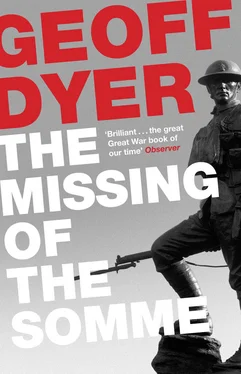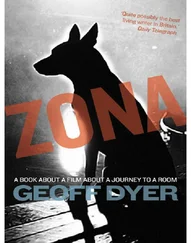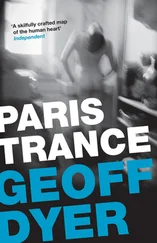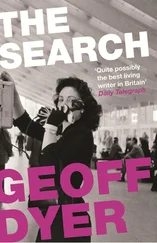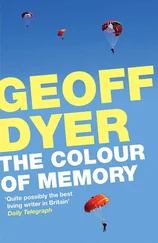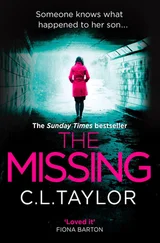Geoff Dyer - The Missing of the Somme
Здесь есть возможность читать онлайн «Geoff Dyer - The Missing of the Somme» весь текст электронной книги совершенно бесплатно (целиком полную версию без сокращений). В некоторых случаях можно слушать аудио, скачать через торрент в формате fb2 и присутствует краткое содержание. Год выпуска: 2012, Издательство: Canongate Books, Жанр: Биографии и Мемуары, Публицистика, Критика, на английском языке. Описание произведения, (предисловие) а так же отзывы посетителей доступны на портале библиотеки ЛибКат.
- Название:The Missing of the Somme
- Автор:
- Издательство:Canongate Books
- Жанр:
- Год:2012
- ISBN:нет данных
- Рейтинг книги:3 / 5. Голосов: 1
-
Избранное:Добавить в избранное
- Отзывы:
-
Ваша оценка:
- 60
- 1
- 2
- 3
- 4
- 5
The Missing of the Somme: краткое содержание, описание и аннотация
Предлагаем к чтению аннотацию, описание, краткое содержание или предисловие (зависит от того, что написал сам автор книги «The Missing of the Somme»). Если вы не нашли необходимую информацию о книге — напишите в комментариях, мы постараемся отыскать её.
The Missing of the Somme — читать онлайн бесплатно полную книгу (весь текст) целиком
Ниже представлен текст книги, разбитый по страницам. Система сохранения места последней прочитанной страницы, позволяет с удобством читать онлайн бесплатно книгу «The Missing of the Somme», без необходимости каждый раз заново искать на чём Вы остановились. Поставьте закладку, и сможете в любой момент перейти на страницу, на которой закончили чтение.
Интервал:
Закладка:
BATTLEFIELD WHERE 18,000
CANADIANS ON THE BRITISH
LEFT WITHSTOOD THE FIRST
GERMAN GAS ATTACKS THE
22–24 APRIL 1915 2,000
FELL AND LIE BURIED NEARBY
In Fields of Glory Jean Rouaud describes a gas attack in terms that recall the rolling fog of Bleak House or the slinking catlike fog of Eliot’s ‘Prufrock’:
Now the chlorinated fog infiltrates the network of communication trenches, seeps into dugouts (mere sections of trench covered with planks), nestles in potholes, creeps through the rudimentary partitions of casements, plunges into underground chambers hitherto preserved from shells, pollutes food and water supplies, occupies space so methodically that frantic pain-racked men search vainly for a breath of air.
The leisurely sentence unfolds infinitely slowly, gradually revealing the harm that this apparently harmless stain on the air can do until, finding yourself running out of breath with several clauses still to go, you are suddenly struggling for the full stop. The initial lyrical lilt of the scene is soon rent apart by ‘the violent cough that tears the lungs and the pleura and brings bloody froth to the lips, the acrid vomiting that doubles up the body’.
John Singer Sargent’s painting Gassed shows a line of ten men making their way through the mass of other gas victims sprawling on the ground on either side of them. Their eyes are bandaged and, as in Brueghel’s Parable of the Blind , each man has his hand on the shoulder of the one in front. In the middle of the group a soldier turns away to vomit. Another, near the front, raises his leg high, expecting a step. An orderly guides and steadies the two men at the head of the line. Further off, to the right of the low sun, another group are making their way uncertainly forward.
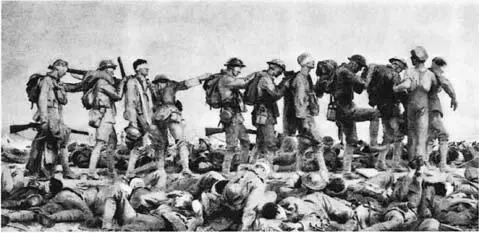
The only sound. .
The soldiers in the foreground lie sleeping or resting, propped on one another. One drinks from a canteen. In the sky there are planes where birds should be, flying haphazardly.
Henry Tonks, another war artist who was with Sargent when he saw the gassed soldiers, recalls the scene:
They sat or lay down on the grass, there must have been several hundred, evidently suffering a great deal, chiefly I fancy from their eyes which were covered up by pieces of lint.
In Gassed there is little suffering. Or rather, what suffering there is is outweighed by the painting’s compassion. In spite of the vomiting figure the scene has almost nothing in common with Owen’s vision of the gas victim whose blood comes ‘gargling from the froth-corrupted lungs’. What Sargent has depicted, instead, is the solace of the blind: the comfort of putting your trust in someone, of being safely led. At the same time the light itself seems enough to restore their sight, light so soft that it will soothe even their gas-ravaged eyes. Pain is noisy, clamorous. In Sargent’s painting coughing and retching are absorbed by the tranquillity of the evening. The lyricism at the opening of Rouaud’s description is beginning to make itself felt again as air and men convalesce, reasserting their capacity for tenderness.
The scene is already touched, in other words, by the beauty of the world as it will be revealed when their vision is restored.
The only sound, that is. . But no, I am getting ahead of myself.
In the first months of the war football was used as an incentive to enlistment; the war, it was claimed, offered the chance to play ‘the greatest game of all’. By the end of 1914 an estimated 500,000 men had enlisted at football matches. By the following spring, professional football had been banned: matches, it was feared, were so popular that (a reversal of the initial strategy) they deterred men from enlisting.
At the front the enthusiasm for the game continued unabated. Whether a match actually took place in No Man’s Land between German and English troops on Christmas Day 1914 is doubtful; even if it did not, it is entirely appropriate that the day’s events should have generated the myth of a football match as the embodiment of fraternization.
The most famous footballing episode was Captain Nevill’s kicking a ball into No Man’s Land on the first day of the Somme. A prize was offered to the first man to dribble the ball into the German trenches; Nevill himself scrambled out of the trench in pursuit of his goal and was cut down immediately. (Perhaps the Somme was not only an indictment of military strategy but also of the British propensity for the long-ball game.) Lawrence’s admonition — that tragedy ought to be a great big kick at misery — could not have been fulfilled more literally.
Move close to Sargent’s painting, closer than its size compels. Through the legs of the gassed soldiers — and especially in the gap opened in the line by the vomiting man — you can glimpse a game of football being played in the background. One team in red, the other in blue, the ball in mid-air, suspended in the lovely evening light.
The only sounds not absorbed by the light are the shouts of the game, just audible to the line of blinded men.
* * *
Road signs direct us through history as well as geography: Poelcapelle, Zonnebeke, Passchendaele. ‘There were many words that you could not stand to hear and finally only the names of places had dignity,’ wrote Hemingway in A Farewell to Arms . A generation later Philip Toynbee remembers, as a boy, ‘murmuring the name Passchendaele in an ecstasy of excitement and regret’. Vernon Scannell too was mesmerized by the ‘litany of proper names’ which crop up, in various permutations, again and again in his poems: ‘Passchendaele, Bapaume, and Loos, and Mons’; ‘Cambrai, Bethune, Arras, Kemmel Hill’; ‘Passchendaele, Verdun, The Menin Road. .’
I cannot remember when in my childhood I first heard of places like these. But I know I heard them — the Somme especially — at home, before I came across them in history books or at school. It was at the Somme that history engaged my family, that my family entered history. Like Shurdington, Cranham, Birdlip, Leckhampton and Churchdown, the name was part of the soil in which the history of my family was rooted. This intertwining of the villages and landmarks of Gloucestershire with those of Flanders and Picardy is also the defining characteristic of the poetry of Ivor Gurney.
Appropriately, his first volume of poetry, published in 1917, was entitled Severn and Somme ; in the letters and poems he wrote from the trenches, and afterwards in the long years of mental illness, he exclaims again and again how — a source of comfort and torment — the landscape of northern France resembles his beloved Gloucestershire. At Crucifix Corner ‘all things said Severn’; in another poem the same spot reminds him of Crickley. Near Vermand, ‘the copse was like a Cranham copse with scythed curve’, like ‘Cotswold her spinnies if ever. .’ Hearing a cuckoo in ‘a shattered wood. . what could [he] think of but Framilode, Minsterworth, Cranham, and the old haunts of home’. Recalling the time he was gassed at ‘bad St Julien’ (long after that first attack, in September 1917), the poem ‘Farewell’ sets the dual landscapes of ‘Ypres’, ‘Somme and Aubers’ and ‘Gloucester’, ‘Cheltenham’, ‘Stroud’ swirling around each other.
Gurney was born in 1890 and served in the Gloucesters, the same regiment as my father’s father. The last fifteen years of his life were spent at the City of London Mental Home, but when he died, in 1937, he was buried just outside Gloucester. Running past the bottom of our garden, Hatherley Brook passes within half a mile of the church at Twigworth where he is buried.
Читать дальшеИнтервал:
Закладка:
Похожие книги на «The Missing of the Somme»
Представляем Вашему вниманию похожие книги на «The Missing of the Somme» списком для выбора. Мы отобрали схожую по названию и смыслу литературу в надежде предоставить читателям больше вариантов отыскать новые, интересные, ещё непрочитанные произведения.
Обсуждение, отзывы о книге «The Missing of the Somme» и просто собственные мнения читателей. Оставьте ваши комментарии, напишите, что Вы думаете о произведении, его смысле или главных героях. Укажите что конкретно понравилось, а что нет, и почему Вы так считаете.
